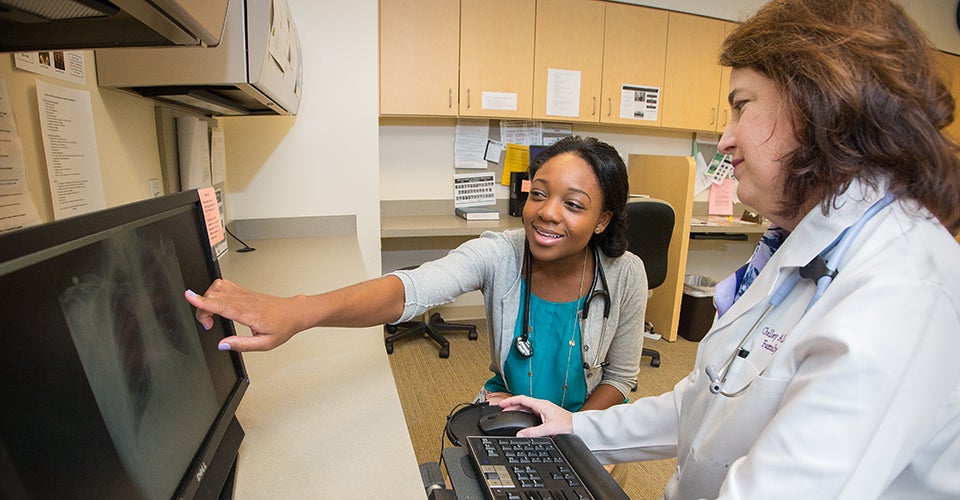VITAL ROLE
ECU leads state in rate of primary care medical graduates
East Carolina University continues to lead the state in the percentage of medical graduates training in or practicing primary care five years after completing school, according to a report presented this month to the state university system.
Of the 65 students who graduated from the Brody School of Medicine in 2010 who were practicing medicine or in residency or fellowship training in 2015, 36 – or 55 percent – were in a primary care field, according to the report compiled by the N.C. Area Health Education Centers and the Cecil G. Sheps Center for Health Services Research at the University of North Carolina at Chapel Hill.
The report defines primary care as family medicine, general internal medicine, pediatrics, OB/GYN and internal medicine-pediatrics.
Dr. Nicholas Benson, interim dean of the Brody School of Medicine, said ECU values its position as a provider of primary care physicians for North Carolina and wants to increase it.
“We recognize Brody has a vital role in training primary care physicians, which is why we will present a plan for expanding our medical education programs to the UNC Board of Governors in January,” he said. That expansion could be to as many as 120 students, according to UNC system documents.

Dr. Vontrelle Roundtree is an ECU medical graduate, completed residency training in family medicine at ECU and now practices in Wayne County. (Photo by Cliff Hollis)
According to the report, 34 percent of a total of 420 N.C. 2010 medical graduates were still in training or practice in a primary care field in 2015. In addition to ECU’s 55 percent, 38 percent of UNC-Chapel Hill’s 136 graduates in 2010 were in primary care five years later as were 30 percent of Wake Forest University’s 115 graduates and 21 percent of Duke University’s 99 graduates. Those numbers do not include graduates who are no longer in training or practice.
In addition, the report says 146 of the total number of the graduates were practicing or training in North Carolina in 2015. ECU led the way in this category, too, with 62 percent of its 2010 graduates still in the state five years later. Thirty-five percent of Chapel Hill graduates, 29 percent of Wake Forest and 25 percent of Duke graduates were still in training or practice in North Carolina in 2015.
About a tenth of ECU’s 2010 graduates, 7 percent of Chapel Hill graduates, 4 percent of Wake Forest graduates and 1 percent of Duke graduates were in training or practice in a rural areas of North Carolina as of 2015.
The report noted, however, that North Carolina’s rural areas continue to have a higher supply of physicians than comparable rural areas elsewhere in the country, largely due to the work of the medical schools, the N.C. AHEC program, the N.C. Office of Rural Health and other programs. Report authors nevertheless called for continued work to increase the supply of providers and better distribute them.
While all four medical schools have programs encouraging students to aim for a career in primary medicine, other factors such as pay and workload make the job more difficult. Primary care doctors usually work longer hours and earn less than doctors who choose a specialty and graduates are drawn to specialties that allow them to control their hours and have less call on nights and weekends, the report said.
The report also noted that community psychiatry, general OB/GYN and general surgery are also vital for rural and underserved communities, and future reports will look at those figures over a certain time period.
A 1993 state law addressing North Carolina’s chronic shortage of primary care doctors said ECU should aim for 60 percent of its graduates choosing residencies in primary care. Since 2011, the percentage of ECU medical graduates matching into primary care residencies has averaged 62.5 percent, according to university figures.
The law established the same 60 percent goal for UNC-Chapel Hill and 50 percent for the Wake Forest and Duke medical schools. In future years, the report will include the Campbell University School of Osteopathic Medicine as its graduates enter residencies in 2017 and into practice in 2020.
